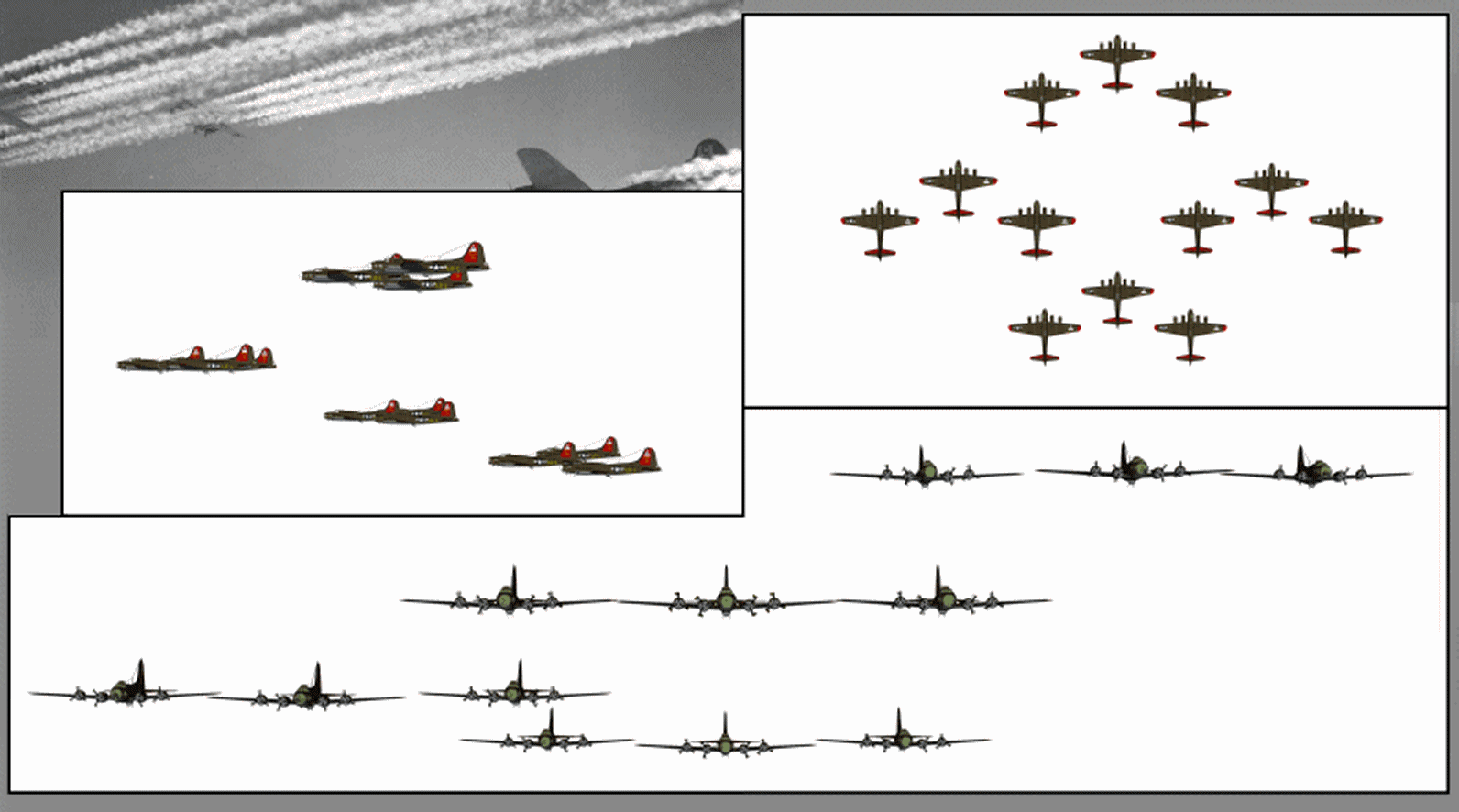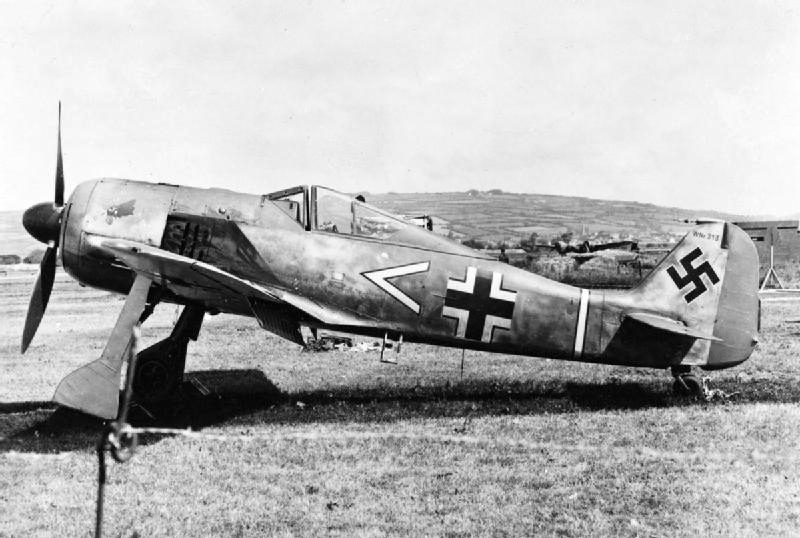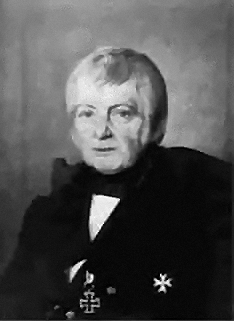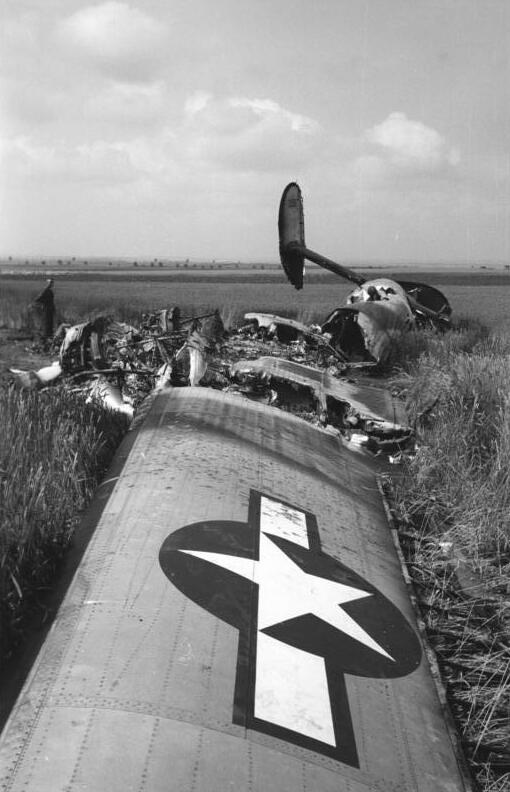|
Waldemar Radener
Waldemar Radener (24 January 1921 – 8 January 1957) was a German Luftwaffe military aviator and fighter ace during World War II. He is credited with 37 aerial victories, all of which claimed over the Western Front and in Defense of the Reich. Born in Lüchtringen, Radener grew up in the Weimar Republic and Nazi Germany. He joined the military service in the Luftwaffe and was trained as a fighter pilot. Following flight training, he was posted to ''Jagdgeschwader'' 26 "Schlageter" (JG 26—26th Fighter Wing) in February 1943. Flying with this wing, Radener claimed his first aerial victory on 13 March 1943 on the Western Front over a Royal Air Force fighter aircraft which was not confirmed. After he had temporarily led 6. '' Staffel'' (6th squadron) of JG 26 in late 1943, he was officially appointed squadron leader of 7. ''Staffel'' (7th squadron) of JG 26 in February 1944. In late January 1945, Radener was given command of II. ''Gruppe'' (2nd group) of JG ... [...More Info...] [...Related Items...] OR: [Wikipedia] [Google] [Baidu] |
Höxter
Höxter () is a town in eastern North Rhine-Westphalia, Germany on the left bank of the river Weser, 52 km north of Kassel in the centre of the Weser Uplands. The main town's population is around 15,000, and with outlying centres, about 30,000. It is the seat of the Höxter district. Historical place names of Höxter are Hoxer and Huxaria. Geography Subdivisions As part of North Rhine-Westphalia's municipal reforms, the collective municipality of Höxter came into being on 1 January 1970, formed out of the eleven communities of the former ''Amt'' of Höxter-Land, the main town, and the community of Bruchhausen from the former ''Amt'' of Beverungen. The communities in question voluntarily merged to pool their resources and bring about a unified administration. These constituent communities are: *Albaxen *Bosseborn * Bödexen *Brenkhausen *Bruchhausen *Fürstenau *Godelheim *Lüchtringen *Lütmarsen *Ottbergen *Ovenhausen *Stahle History Höxter (Latin Huxaria) in the t ... [...More Info...] [...Related Items...] OR: [Wikipedia] [Google] [Baidu] |
Weimar Republic
The Weimar Republic (german: link=no, Weimarer Republik ), officially named the German Reich, was the government of Germany from 1918 to 1933, during which it was a constitutional federal republic for the first time in history; hence it is also referred to, and unofficially proclaimed itself, as the German Republic (german: Deutsche Republik, link=no, label=none). The state's informal name is derived from the city of Weimar, which hosted the constituent assembly that established its government. In English, the republic was usually simply called "Germany", with "Weimar Republic" (a term introduced by Adolf Hitler in 1929) not commonly used until the 1930s. Following the devastation of the First World War (1914–1918), Germany was exhausted and sued for peace in desperate circumstances. Awareness of imminent defeat sparked a revolution, the abdication of Kaiser Wilhelm II, formal surrender to the Allies, and the proclamation of the Weimar Republic on 9 November 1918. In its i ... [...More Info...] [...Related Items...] OR: [Wikipedia] [Google] [Baidu] |
Supermarine Spitfire
The Supermarine Spitfire is a British single-seat fighter aircraft used by the Royal Air Force and other Allied countries before, during, and after World War II. Many variants of the Spitfire were built, from the Mk 1 to the Rolls-Royce Griffon engined Mk 24 using several wing configurations and guns. It was the only British fighter produced continuously throughout the war. The Spitfire remains popular among enthusiasts; around 70 remain airworthy, and many more are static exhibits in aviation museums throughout the world. The Spitfire was designed as a short-range, high-performance interceptor aircraft by R. J. Mitchell, chief designer at Supermarine Aviation Works, which operated as a subsidiary of Vickers-Armstrong from 1928. Mitchell developed the Spitfire's distinctive elliptical wing with innovative sunken rivets (designed by Beverley Shenstone) to have the thinnest possible cross-section, achieving a potential top speed greater than that of several contemporary figh ... [...More Info...] [...Related Items...] OR: [Wikipedia] [Google] [Baidu] |
Vitry-En-Artois Airport
Vitry-en-Artois Airfield is a regional airfield in France, located northeast of Vitry-en-Artois; north-northeast of Paris. It supports general aviation with no commercial airline service scheduled. It was built prior to World War II. Seized by the Germans in June 1940 during the Battle of France, it was used as a Luftwaffe military airfield during the occupation. Recaptured by the Allies in late 1944, it was used as an Allied military airfield until the end of the war. History Error : Confusion between Vitry-en-Artois (B-50, northern France) and Vitry-le-François (A-67, Champagne region). German use during World War II A small grass airfield prior to World War II, it was seized by the Germans in late May 1940. After its capture, Vitry-En-Artois was used by the Luftwaffe as a combat airfield during the Battle of France. As part of the Blitzkrieg, the Germans assigned the following units to the airfield during the battle, carrying out air attacks on the defending French and ... [...More Info...] [...Related Items...] OR: [Wikipedia] [Google] [Baidu] |
Wilhelm-Ferdinand Galland
Wilhelm-Ferdinand "Wutz" Galland (23 October 1914 – 17 August 1943) was a German Luftwaffe military aviator and fighter ace during World War II. He is credited with 55 aerial victories achieved in 186 combat missions. All his victories were claimed over the Western Front and in Defense of the Reich. This figure included seven four-engine bombers and 37 Supermarine Spitfire fighters. Born in Bochum, Galland grew up in the Weimar Republic and Nazi Germany. He joined the military service in the Wehrmacht in 1935, initially serving with the anti-aircraft artillery of the Luftwaffe. Upon his request in late 1940, he transferred to the ''Jagdwaffe'' (fighter force). Following flight training, he was posted to ''Jagdgeschwader'' 26 "Schlageter" (JG 26—26th Fighter Wing) in June 1941. Flying with this wing, Galland claimed his first aerial victory on 23 July 1941 on the Western Front over a Royal Air Force fighter aircraft. He was made ''Staffelkapitän'' (squadron leader) of ... [...More Info...] [...Related Items...] OR: [Wikipedia] [Google] [Baidu] |
Focke Wulf Fw 190
The Focke-Wulf Fw 190, nicknamed ''Würger'' ("Shrike") is a German single-seat, single-engine fighter aircraft designed by Kurt Tank at Focke-Wulf in the late 1930s and widely used during World War II. Along with its well-known counterpart, the Messerschmitt Bf 109, the Fw 190 became the backbone of the (Fighter Force) of the . The twin-row BMW 801 radial engine that powered most operational versions enabled the Fw 190 to lift larger loads than the Bf 109, allowing its use as a day fighter, fighter-bomber, ground-attack aircraft and to a lesser degree, night fighter. The Fw 190A started flying operationally over France in August 1941 and quickly proved superior in all but turn radius to the Supermarine Spitfire (early Merlin-powered variants)#Mk V (Mk V (Types 331, 349 and 352)), Spitfire Mk. V, the main front-line fighter of the Royal Air Force (RAF), particularly at low and medium altitudes. The 190 maintained superiority over Allies of World War II, Allied fighters until th ... [...More Info...] [...Related Items...] OR: [Wikipedia] [Google] [Baidu] |
Leutnant
() is the lowest Junior officer rank in the armed forces the German (language), German-speaking of Germany (Bundeswehr), Austrian Armed Forces, and military of Switzerland. History The German noun (with the meaning "" (in English "deputy") from Middle High German «locum tenens» (in English "place holder") was derived from the French word about 1500. In most German-speaking armies it is the lowest officer rank (in German-speaking navies (English "Lieutenant at sea")). In the German Bundeswehr the ranks and belong to the rank group. In some other armed forces (such as the former National People's Army) there is the lower grade of Unterleutnant. From about 1500 until the middle of the 17th century the designation of was commonly used for any deputy to a commanding officer. So at the army level there was the appointment of (English "lieutenant-general"), at the regimental level there was that of (English "lieutenant-colonel"), and at the company level the was deputy to ... [...More Info...] [...Related Items...] OR: [Wikipedia] [Google] [Baidu] |
Free State Of Prussia
The Free State of Prussia (german: Freistaat Preußen, ) was one of the constituent states of Germany from 1918 to 1947. The successor to the Kingdom of Prussia after the defeat of the German Empire in World War I, it continued to be the dominant state in Germany during the Weimar Republic, as it had been during the empire, even though most of Germany's post-war territorial losses in Europe had come from its lands. It was home to the federal capital Berlin and had 62% of Germany's territory and 61% of its population. Prussia changed from the authoritarian state it had been in the past and became a parliamentary democracy under its 1920 constitution. During the Weimar period it was governed almost entirely by pro-democratic parties and proved more politically stable than the Republic itself. With only brief interruptions, the Social Democratic Party (SPD) provided the Minister President. Its Ministers of the Interior, also from the SPD, pushed republican reform of the administr ... [...More Info...] [...Related Items...] OR: [Wikipedia] [Google] [Baidu] |
Province Of Westphalia
The Province of Westphalia () was a province of the Kingdom of Prussia and the Free State of Prussia from 1815 to 1946. In turn, Prussia was the largest component state of the German Empire from 1871 to 1918, of the Weimar Republic and from 1918 to 1933, and of Nazi Germany from 1933 until 1945. The province was formed and awarded to Prussia at the Congress of Vienna in 1815, in the aftermath of the Napoleonic Wars. It combined some territories that had previously belonged to Prussia with a range of other territories that had previously been independent principalities. The population included a large population of Catholics, a significant development for Prussia, which had hitherto been almost entirely Protestant. The politics of the province in the early nineteenth century saw local expectations of Prussian reforms, increased self-government, and a constitution largely stymied. The Revolutions of 1848 led to an effervescence of political activity in the province, but the failur ... [...More Info...] [...Related Items...] OR: [Wikipedia] [Google] [Baidu] |
German Air Force
The German Air Force (german: Luftwaffe, lit=air weapon or air arm, ) is the aerial warfare branch of the , the armed forces of Germany. The German Air Force (as part of the ''Bundeswehr'') was founded in 1956 during the era of the Cold War as the aerial warfare branch of the armed forces of then West Germany. After the reunification of West and East Germany in 1990, it integrated parts of the air force of the former German Democratic Republic, which itself had been founded in 1956 as part of the National People's Army. There is no organizational continuity between the current German Air Force and the former Luftwaffe of the Wehrmacht founded in 1935, which was completely disbanded in 1945/46 after World War II. The term that is used for both the historic and the current German air force is the German-language generic designation of any air force. The commander of the German Air Force is Lieutenant General Ingo Gerhartz. As of 2015, the German Air Force uses eleven air bas ... [...More Info...] [...Related Items...] OR: [Wikipedia] [Google] [Baidu] |
Jagdgeschwader 300
''Jagdgeschwader'' 300 (JG 300) was a Luftwaffe fighter aircraft, fighter-Wing (air force unit), wing of World War II. JG 300 was formed on June 26, 1943 in Deelen as Stab/Versuchskommando Herrmann, from July 18, 1943 as Stab/JG Herrmann and finally renamed on August 20, 1943 to Stab/JG 300. Its first ''Geschwaderkommodore'' was Oberstleutnant Hajo Herrmann. Genesis and ''Wilde Sau'' JG 300 had its origins in April 1943, when Major Hajo Herrmann, a decorated bomber pilot, advocated the use of single-seat day fighters as night fighters against the Royal Air Force (RAF) bomber offensive. He suggested that single seat fighters could operate in the bombers' general target area using the light of target indicators, massed searchlights and the fires on the ground to spot their targets. These operations were tested over Berlin during May and June 1943 and codenamed ''Wilde Sau (Luftwaffe night fighter tactics), Wilde Sau''. Recruiting a group of experienced bomber pilots and former in ... [...More Info...] [...Related Items...] OR: [Wikipedia] [Google] [Baidu] |
Organization Of The Luftwaffe (1933–1945)
Between 1933 and 1945, the organization of the Luftwaffe underwent several changes. Originally, the German military high command, for their air warfare forces, decided to use an organizational structure similar to the army and navy, treating the aviation branch as a strategic weapon of war. Later on, during the period of rapid rearmament, the Luftwaffe was organized more in a geographical fashion. Under the terms of the Treaty of Versailles (1919), Germany was prohibited from having an air force, with the former German Empire's ''Luftstreitkräfte'' disbandment in 1920. German pilots were secretly trained for military aviation, first in the Soviet Union during the late 1920s, and then in Germany in the early 1930s. In Germany, the training was done under the guise of the German Air Sports Association (german: Deutscher Luftsportverband (DLV)) at the Central Commercial Pilots School (german: Zentrale der Verkehrs Fliegerschule (ZVF)). Following its 15 May 1933 formation in secret, ... [...More Info...] [...Related Items...] OR: [Wikipedia] [Google] [Baidu] |




.jpg)



